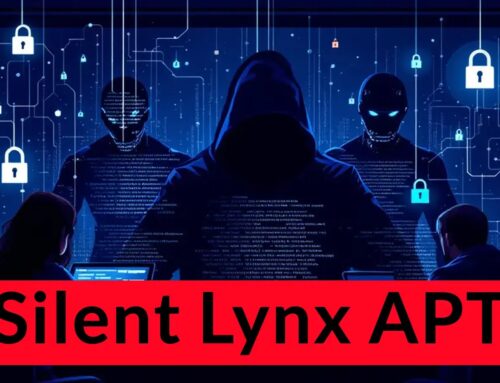
First Member of ‘Scattered Spider’ Hackers Group Sentenced to 10 Years
First ‘Scattered Spider’ Member Sentenced: A Decisive Blow Against Cybercrime
The cybersecurity landscape has witnessed a significant development recently as the first member of the notorious “Scattered Spider” hacking group was sentenced to a substantial prison term. This decisive legal action against a key player in a prolific cybercrime syndicate underscores the increasing effectiveness of law enforcement in tracking down and prosecuting sophisticated threat actors. This post delves into the specifics of this sentencing, the nature of the Scattered Spider group, and the broader implications for organizational cybersecurity.
Who is Scattered Spider? Understanding a Modern Cyber Threat
Scattered Spider is a highly active and agile cybercrime group known for its sophisticated social engineering tactics and its focus on compromising corporate networks. Unlike many traditional ransomware groups, Scattered Spider often specializes in data exfiltration and extortion, frequently leveraging techniques like SIM swapping and targeting employees with privileged access. Their modus operandi emphasizes human manipulation to bypass robust technical security controls, making them a particularly challenging adversary for many organizations.
Their campaigns frequently involve:
- Social Engineering: Highly tailored phishing, vishing, and smishing attacks designed to trick employees into revealing credentials or installing malware.
- SIM Swapping: Gaining control of a victim’s phone number to intercept multi-factor authentication (MFA) codes.
- MFA Bypass: Employing various techniques to circumvent or trick MFA systems, often in conjunction with social engineering.
- Ransomware Deployment (Occasional): While not their primary focus, they have been linked to ransomware deployment in some instances, typically through affiliate programs.
- Data Exfiltration and Extortion: Stealing sensitive corporate data and then threatening to publish it unless a ransom is paid.
Noah Urban: The First Domino Falls
A 20-year-old Florida man, Noah Michael Urban of Palm Coast, has been identified as the individual sentenced to 10 years in federal prison. This sentencing marks a critical milestone in the ongoing efforts to dismantle Scattered Spider. Urban was also ordered to pay approximately $13 million in restitution to the victims affected by his illicit activities. His guilty plea in April 2025 undoubtedly played a role in the speed of this conviction, highlighting the collaborative efforts between law enforcement agencies to bring these criminals to justice.
This case serves as a powerful deterrent, signaling that even young and technologically adept individuals involved in high-profile cybercrime will face severe consequences. The substantial restitution ordered also emphasizes the financial devastation wrought by these attacks, aiming to compensate victims for their losses.
Broader Implications for Cybersecurity Professionals
The successful prosecution of a Scattered Spider member reinforces several key points for cybersecurity professionals and organizations:
- Human Element as the Weakest Link: Scattered Spider’s success heavily relies on exploiting human vulnerabilities. This case is a stark reminder that even the most advanced technical controls can be bypassed through effective social engineering.
- Importance of Employee Training: Regular, comprehensive security awareness training tailored to current threats is paramount. Employees must be educated on recognizing phishing attempts, understanding the dangers of SIM swapping, and verifying unusual requests.
- Robust MFA is Critical, But Not a Panacea: While MFA significantly enhances security, threat actors like Scattered Spider are actively developing methods to bypass it. Organizations should implement phishing-resistant MFA solutions where possible, such as FIDO2/WebAuthn.
- Collaboration with Law Enforcement: The successful identification and prosecution of this individual underscore the growing effectiveness of international law enforcement cooperation in attributing and apprehending cybercriminals.
- Zero Trust Principles: Adopting a Zero Trust security model, where no user or device is trusted by default, can help limit the blast radius even if initial compromises occur.
Remediation Actions and Proactive Defenses
To effectively counter threats from groups like Scattered Spider, organizations must adopt a multi-layered approach focusing on both technical controls and human factors. There is no specific CVE associated with social engineering tactics, as they exploit human vulnerabilities rather than software flaws. However, the outcomes of such attacks can lead to system compromise and data breaches, which might later be associated with specific exploit techniques or vulnerabilities.
- Enhanced Employee Security Awareness Training:
- Conduct frequent, interactive training sessions on phishing, vishing, smishing, and social engineering tactics.
- Use simulated phishing campaigns to test employee resilience and identify areas for improvement.
- Educate employees on the dangers of sharing sensitive information, even internally, without proper verification.
- Implement Phishing-Resistant MFA:
- Prioritize MFA solutions like hardware security keys (e.g., YubiKey, Titan Security Key) utilizing FIDO2/WebAuthn protocols. These are significantly more resistant to phishing than SMS or one-time password (OTP) apps.
- Avoid SMS-based MFA where possible due to its vulnerability to SIM swapping.
- Strengthen Incident Response Plans:
- Develop and regularly test incident response plans specifically for social engineering and account takeover scenarios.
- Ensure clear communication channels and defined roles for cybersecurity teams, legal, and public relations.
- Include protocols for rapidly freezing compromised accounts and revoking access.
- Robust Identity and Access Management (IAM):
- Implement strong password policies and regularly enforce password changes.
- Utilize Privileged Access Management (PAM) solutions to control and monitor access to critical systems.
- Regularly audit user accounts and permissions, revoking access for dormant or unnecessary accounts.
- Enhanced Network Monitoring and Threat Detection:
- Deploy EDR (Endpoint Detection and Response) and XDR (Extended Detection and Response) solutions to detect anomalous activity, even if initial user credentials are compromised.
- Monitor for unusual login patterns (e.g., logins from new locations, impossible travel).
- Utilize Security Information and Event Management (SIEM) systems for centralized log analysis and threat correlation.
Relevant Tools for Defense Against Social Engineering and Account Takeover
| Tool Name | Purpose | Link |
|---|---|---|
| KnowBe4 | Security awareness training & simulated phishing | https://www.knowbe4.com/ |
| Okta / Duo Security | MFA and Access Management | https://www.okta.com/ / https://duo.com/ |
| Microsoft Defender for Endpoint / CrowdStrike Falcon | Endpoint Detection and Response (EDR) | https://www.microsoft.com/en-us/security/business/threat-protection/microsoft-defender-for-endpoint / https://www.crowdstrike.com/ |
| Splunk / Sumo Logic | SIEM (Security Information and Event Management) | https://www.splunk.com/ / https://www.sumologic.com/ |
| CyberArk | Privileged Access Management (PAM) | https://www.cyberark.com/ |
Conclusion: Justice Served, Vigilance Continues
The sentencing of Noah Urban is a significant victory for law enforcement and a validation of intensified efforts against cybercrime syndicates. It sends a clear message that involvement in groups like Scattered Spider carries severe legal repercussions. For organizations, this case serves as a critical reminder that while technical defenses are essential, continuous investment in human security awareness, robust identity management, and advanced threat detection capabilities are indispensable to defending against sophisticated, human-centric attacks.





